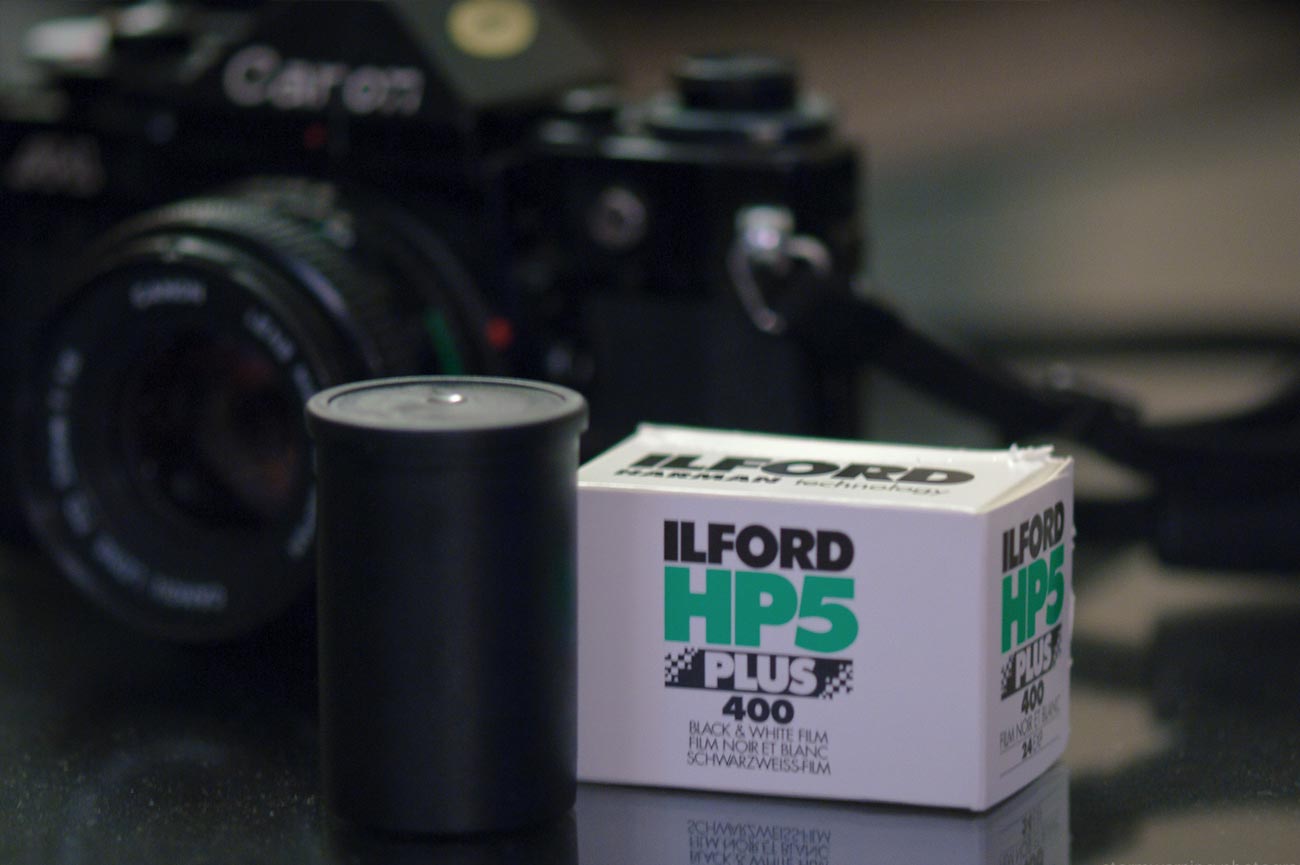Quick Guide to Black and White Photography Part 1 – Choosing Film

Photo by Jeff Nelson. Licensed under CC BY-SA 2.0
Black and White Film Overview
One key to black and white photography is understanding film. Black and white film is made up of three layers: a light-sensitive emulsion layer, a plastic strip to support the emulsion, and an anti-halation layer designed to capture light that has come through the emulsion and plastic and prevent it from bouncing back. The emulsion layer contains grains of silver salt that, once exposed by light, react with a developer and break down into pure silver. These grains of salt are the key to understanding fast or slow film. Larger salt grains require less light to create an image and is therefore a faster film as it can be exposed quicker. Smaller salt grains, conversely, require more light to create an image and is therefore a slower film. These grains translate to a final print; faster films have larger salt grains and result in a grainier print than slower film.
Film Speed
So what does this mean for black and white photography? As stated, the salt grain of black and white film decides the proper speed of a particular film as well as the graininess of the final print. This alone is probably the most important aspect in selecting a black and white film to use. To make it easy on the photographer the film speed is represented as an ISO number (formerly known as an ASA number). Typical film speed ratings are ISO 50, ISO 100, ISO 125 and ISO 400, however there are higher ISO films available and some in between. The higher the ISO number the faster the film becomes and therefore the grainier the film becomes.
As the film speed number doubles the faster film requires half the light to form an image. So ISO 100 film needs half the light of ISO 50 (ISO 100 is twice as fast as ISO 50) and ISO 400 film needs one eighth as much light as ISO 50 (ISO 400 is eight times as fast as ISO 50).
From this point you can make a decision on the film speed you’d like to use for black and white photography. To quickly recap:
- ISO 50 is a slow film to use when there is ample light to allow an acceptable exposure and/or the final print must have minimum graininess.
- ISO 400 is a faster film to use when there is low light available and/or graininess does not matter to you in the remaining print.
What Film to Use?
There are two commonly available black and white film brands: Kodak and Ilford. Fuji is also an option for black and white photography though may be slightly more difficult to find compared to the other two. Unfortunately there is no definitive answer as to which film you should start with. Instead, it would be highly recommended that you work with various films to find out which one you like best. Please see the black and white film page of this website for a quick comparison of various brands and speeds.
It should also be noted that 35mm black and white film typically comes in two lengths: 24 exposures and 36 exposures. It is not uncommon to get a few extra images from each roll of film; but once you’ve taken the “maximum” amount of exposures you should proceed with caution for any additional shots as they may or may not come out once processed.
Once you have selected your film you are ready for the next step – preparing your camera for use, including loading the film into the camera.

















